Estyr is an alt indie and R&B musician based in Toronto. She weaves stories of femininity, heartbreak, liminality, and Toronto’s suburbs into songs layered with lush vocals and warm acoustic guitar. Estyr performs solo, with upright bassist Brandon Davis, or with experimental band Tiger Balme. Her single, “All Tied Up” was released in May 2021.
Pre-pandemic, I was living in a haze. Most days, I felt like I was running a marathon. I was always rushing from place to place: part-time work shifts, castings, rehearsals, volunteering in a spiritual community, networking (I hate that word). I was giving my time to anyone who asked for it. I was living a creative life without boundaries, allowing whatever seemed urgent to consume my day. Song ideas only came to mind when I could let my mind drift. Biking Toronto’s salt-stained streets, I’d think of a melody and pull over to the side of the road to record it on my phone. At other times, when I felt the days getting away from me, I’d make a list of artistic goals, one I never had enough time to follow through on.
By the time March 2020 rolled around, I had creative ideas and plans for a lifetime. Like leftover groceries, they were rotting in the fridge because I never had time to cook. Instead, I was searching out the novelty of new experiences and people, always looking for what I needed outside of my internal creative resources. It was a gluttony of sorts: always starting new songs but never finishing them, indulging in the optimism of beginnings without getting to any endings. There was a reason for that of course.
In a world full of masterpieces, it’s hard to finish something average. And like a sloppy dinner guest, I always prefer the first taste of a new dish to the last bite of my own.

The cover of Estyr’s All Tied Up EP designed by Michelle Ngo
At first, I blamed exhaustion and busyness for keeping me from finishing my creative ideas. But if I’m being honest, fear was my biggest obstacle. At the end of every day, despite being tired, I would scroll through Instagram. Every friend’s new album, video, and accolade felt like a kick in the stomach, highlighting my own lack of progress. Yayoi Kusama’s “INFINITY MIRRORED ROOM – LET’S SURVIVE FOREVER” installation is a room of reflective surfaces creating the illusion of infinity. Instagram was my own infinity room, where I lost touch with my own dreams, and drifted into the desire to be shiny and new. I’ve always felt like a creative late bloomer—ten steps behind everyone else.
When the pandemic hit, it was an epic tragedy. That tragedy continues to unfold, especially in my home province of Ontario where racialized and working class families have been disproportionately affected. But on a personal level as a creative, being let go from my job and confined due to stay-at-home orders rescued me from novelty. I was able to stay home in the first place without worrying about survival because of my immense privilege—I received a government benefit that let me focus on songwriting. I think privilege is creativity’s cousin.
“By the time March 2020 rolled around, I had creative ideas and plans for a lifetime. Like leftover groceries, they were rotting in the fridge because I never had time to cook.”
I no longer had a million places to go and things to do and people to meet. I felt like I had time, and with that time I was faced with everything I’d neglected up until that point:
- Dying houseplants
- Messes of papers piled into dusty corners
- Dozens of unfinished songs and unexecuted ideas
- Half-finished DIY projects
- A personal reckoning with creative purpose
- The present moment
At first I felt invigorated—I was finally doing what I had procrastinated on for so long.
But then fear returned. Finishing a project requires me to say “this is enough”. Finishing a project asks me to stand behind my own efforts and ask others to “please, take a look”.
SLOW DRIP
“Slow Drip” was my attempt to make a happy, chill song with producer LE-VI. Pre-pandemic, we met in different corners of university campuses to write demos. I couldn’t stop writing sad songs, so I challenged myself to write something sunny. We finished the song and I loved it but I was worried. As an artist in the land of streaming, it’s best to stick to one genre and build momentum. This R&B bop did not mesh with my upcoming soft rock EP.
Ultimately, I did release the song. 2020, the dumpster fire it was, allowed me to take my own worries more lightly. “Slow Drip” made me feel happy and if I could share that feeling with others, I should.
I’ve heard “limitations breed creativity” and I saw that at play with this project. My creative/life partner Serville Poblete and I had no budget, so we started assembling a rag tag team. We asked my friend to use her bathroom as a set. We asked another friend, Morgana, to do cinematography. Our friend Amanda came on board as a makeup artist. We asked for favours from nail salons and jewellery brands. We didn’t have a lot of room to film so we shot the whole thing on an iPhone 11. Letting go of our ideal filming scenario allowed us to play because perfection wasn’t an option (of course it never is).
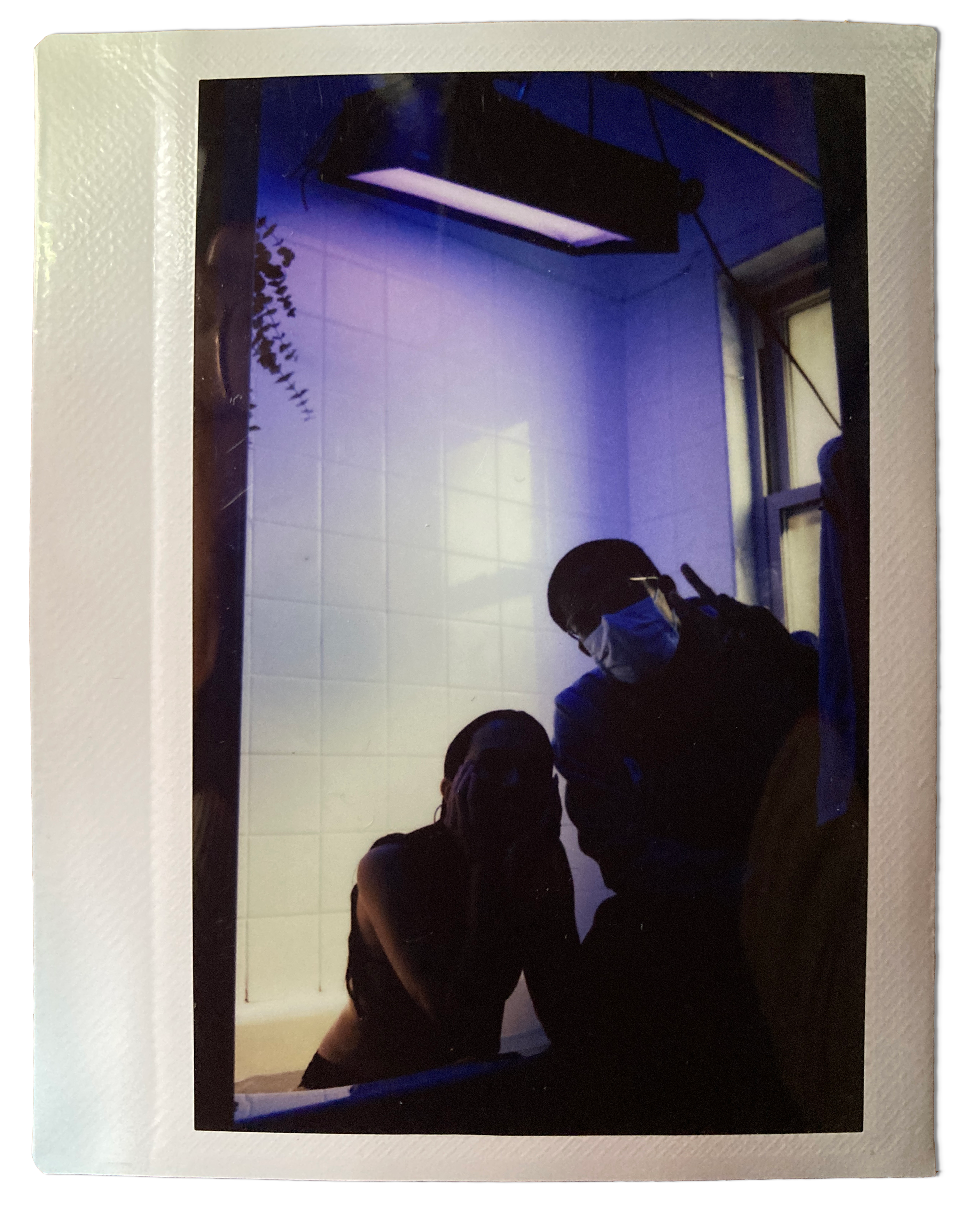
“Letting go of our ideal filming scenario allowed us to play because perfection wasn’t an option (of course it never is).”
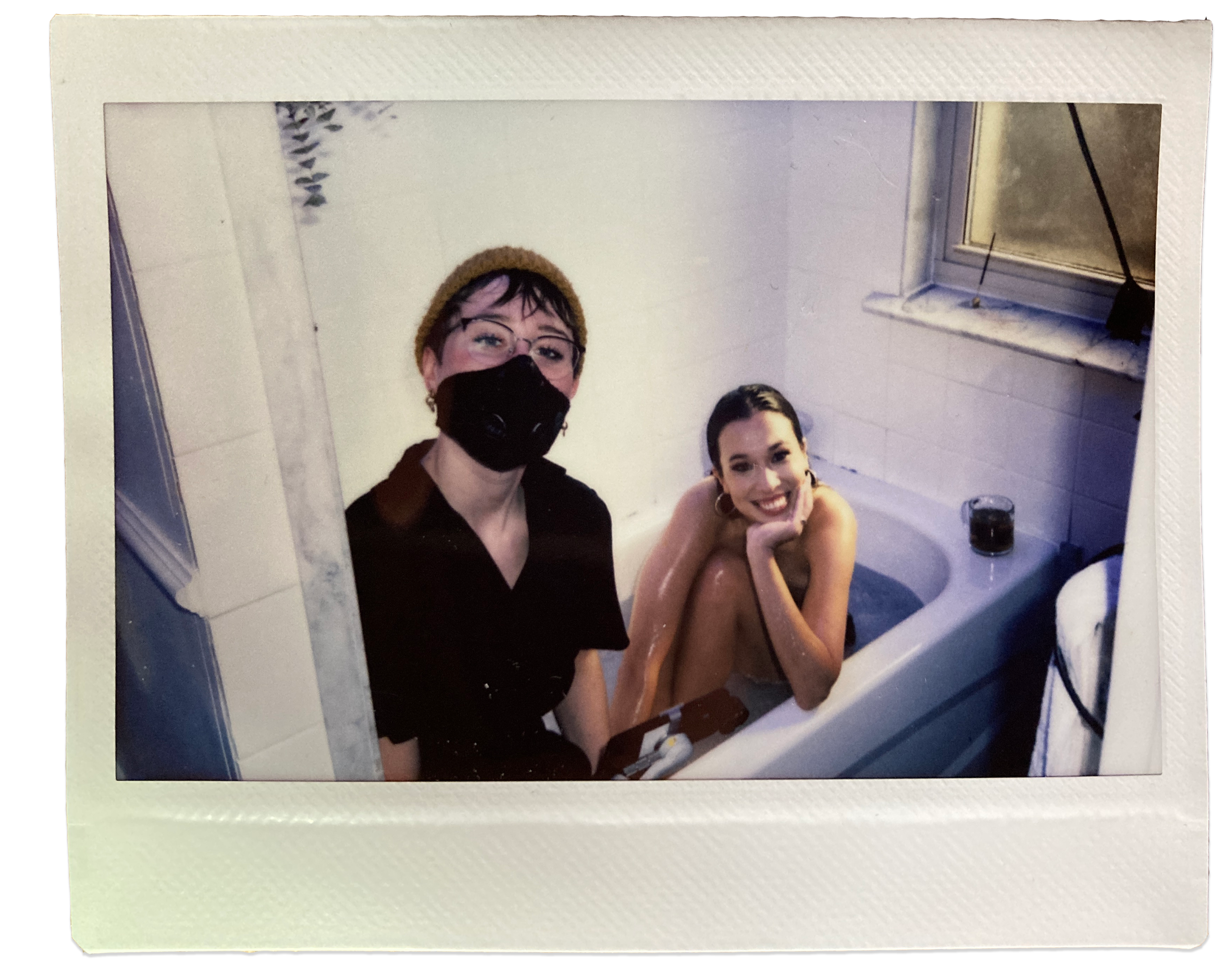
The Crew: Estyr, cinematographer and colourist Morgana Mckenzie, and director Serville Poblete.
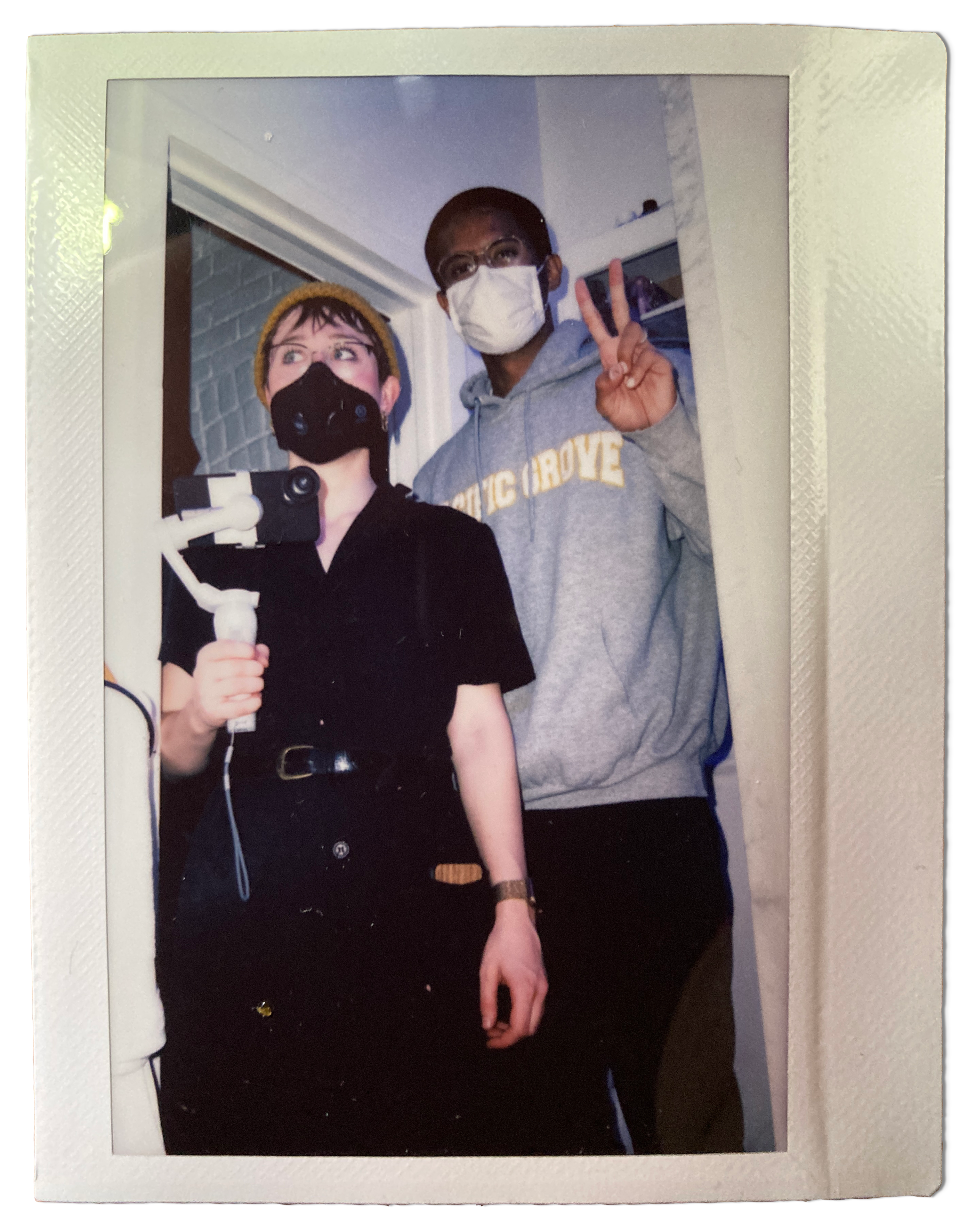
If you watch the video you’ll see a woman transported between two realities. Serville’s priority was building the video around a compelling narrative: a dystopian fantasy of self-care. We had originally thought our video’s lead would be a nail technician, bringing visibility to often unseen Asian female labour. But our friend Amanda thought the character should be closer to my own pre-pandemic reality: a twenty-something working several jobs, helmet still on her head. We loved that insight and ran with it.
When we dropped the video, people told me it made them feel good. The song’s sonic and visual elements were definitely outside of my comfort zone, so I felt validated but also vulnerable trying something new. I don’t think I could’ve ever made something so sensual and playful without the pandemic “let’s-make-it-work” attitude we started with.
ALL TIED UP
“All Tied Up” was another song I wrote pre-pandemic. The song is the title track from my upcoming EP and will also be on the soundtrack for “Altar Boy”, Serville’s debut feature-length film (incidentally, also how we met). In March 2020, the song was sitting in my voice notes. When I listened to the voice note—just a melody and piano chords—I heard what I’d been feeling in lockdown: icky entanglement in repetitive, unchanging days. I sent the voice note to my producer-friend Rob and he started crafting the song’s skeleton into a lush lo-fi soundscape.
During this pandemic, I’ve been seeing a lot of videos using projectors and I can understand why. Screens have been one of a few ways to escape our tiny apartments and lives. Serville and I happened to be house-sitting for a family that had a projector. We never miss an opportunity to make cool shit, so we started brainstorming project ideas. We landed on a key piece of inspiration, “letting them out; a series of projections” by Hannah Gottschalk. In this series Hannah took photos of people with images of themselves projected on their bodies. The resulting portraits were distorted, surprising, sometimes alarming. We spring-boarded off her idea, but made it video.
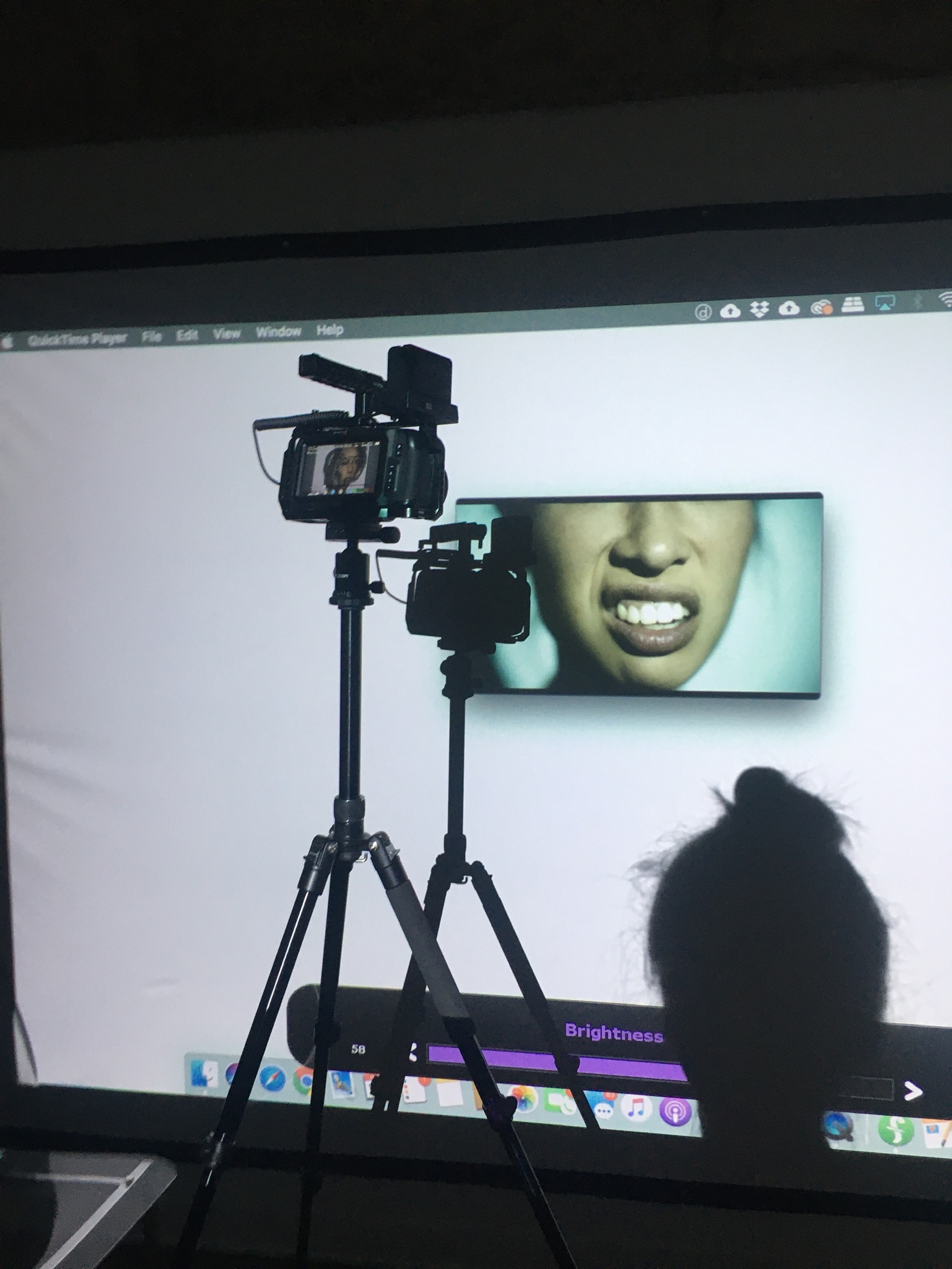
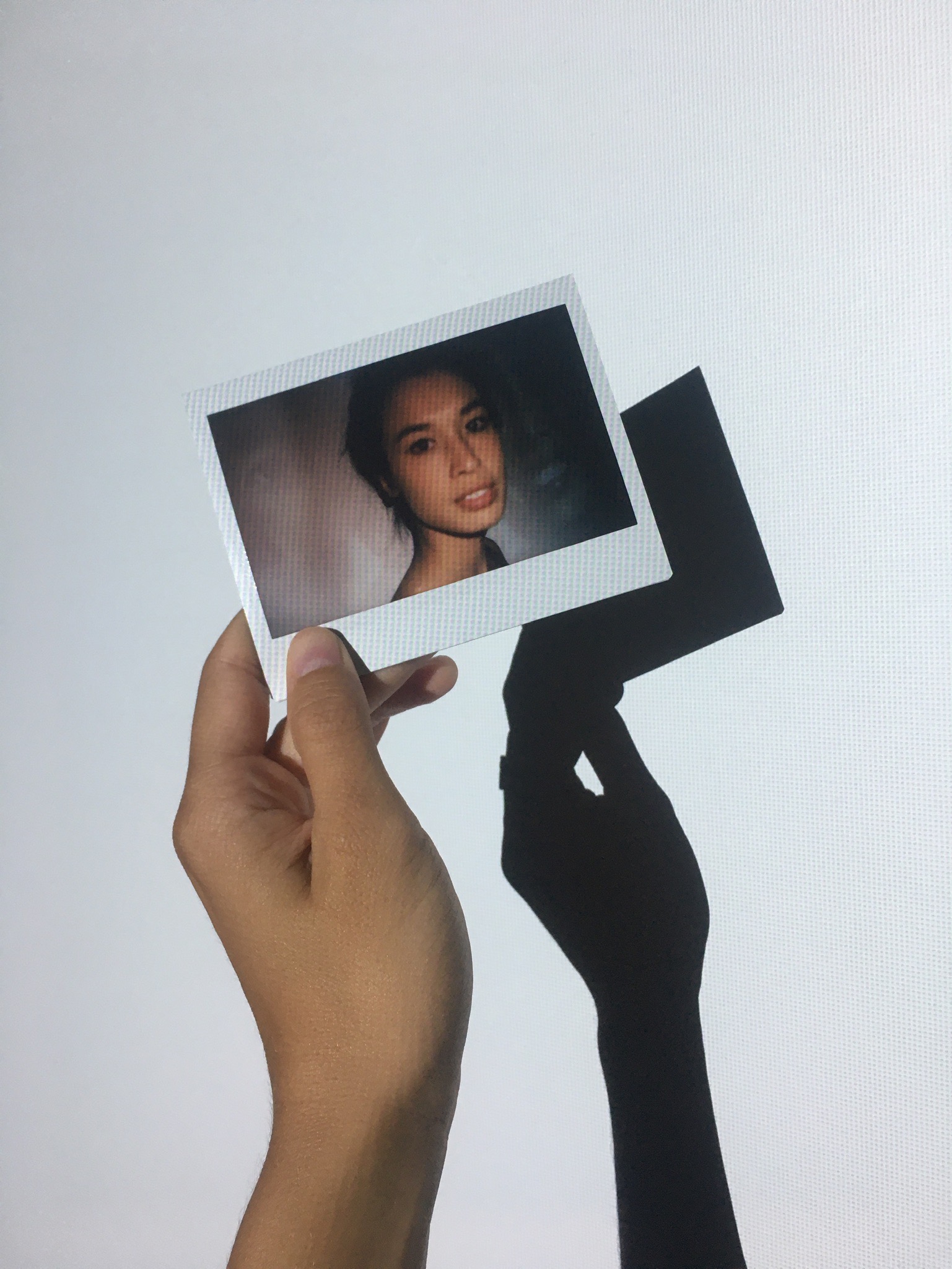
Estyr, in between screen tests prior to shooting All Tied Up.

It took us a few impulsive evenings to get the shots right. There was a lot of trial and error: recording the projections, recording real-me with projection-me, thinking “that’s not quite right” and doing everything all over again.
Looking at the video now, I see my ever-present relationship with screens: trying to escape my life with a screen, but inevitably returning to a version of myself that’s been distorted by everything I’ve seen.
END.
Finishing my creative leftovers offered me a way to accept past versions of myself by fossilizing them into .wav files and music videos. It has helped me let history be, instead of trying to change or hide the past. Letting others judge, ignore, criticize, and receive my work has been really difficult and continues to be, so making art in lockdown is active resistance against that fear, license to be far less precious with my work. I have a fresh perspective on what’s in the fridge: covered in mess, cooking up god-knows-what, experimenting with whatever I have on hand.



























